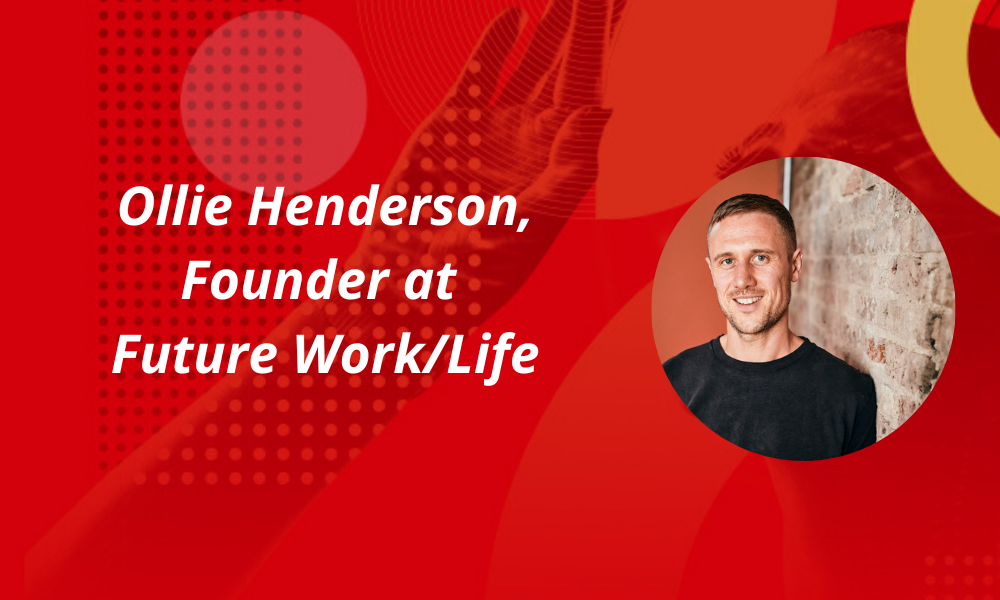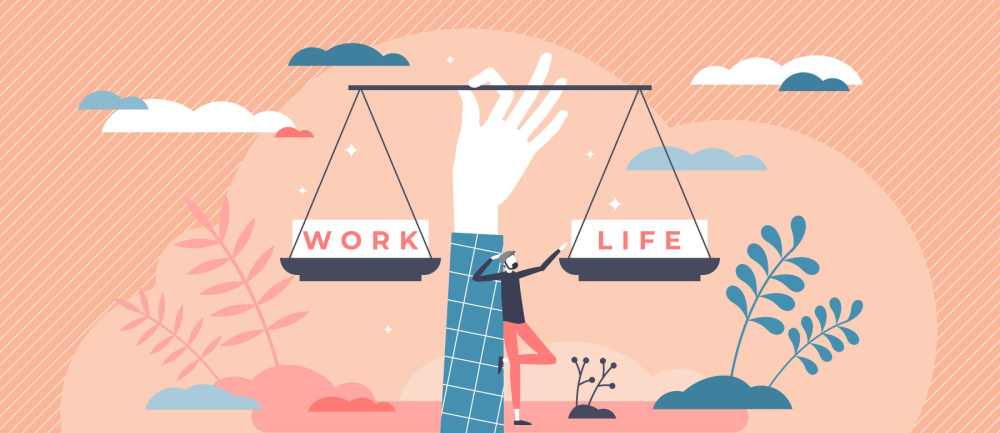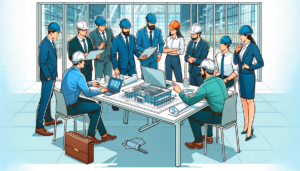If not balance, then what?
- 7 Min Read
Ollie Henderson, Founder at Future Work/Life and Future of Work specialist, posits that HR leaders must consider career and personal life as interdependent when framing policies and strategies.
- Author: Ollie Henderson
- Date published: Oct 25, 2022
- Categories

How do you know when you’ve finally found the perfect work/life balance?
Sorry, trick question. Because, based on my experience and research, it’s impossible. Work/life balance is a myth, and chasing it is doing more harm than good.
Let me explain.
The positive and negative effects of greater flexibility
While most people seem to love new-found levels of freedom at work, flexibility creates new challenges. You might celebrate no longer having to commute to the office every day, but you probably also miss the connection you used to enjoy with seeing teammates in real life. Although you’ll enjoy being able to fit in a walk in the park or some exercise during your day, it’s not much fun when the trade-off is being expected to answer emails at crazy times.
So, while surveys report general happiness levels to be higher, there are also mounting problems with burnout, anxiety and loneliness.
Just take a look at Deloitte’s Women @ Work 2022 report for evidence.
- 53% of women say they’re more stressed than a year ago.
- 33% have had to take time off because of their mental health.
- 46% report being burnt out, which is the main reason for changing jobs.
Women have been hardest hit by the expectation that with greater flexibility, you should achieve better ‘work/life balance’.
If only it were that simple.
After all, what does work/life balance actually mean?
And how do you achieve this magical state?
Over the past year, I’ve interviewed hundreds and surveyed thousands of business leaders and knowledge workers to understand better how they’re adapting to the new world of work. Striving for work/life balance is high on most people’s agenda, which makes sense, of course. It certainly sounds like something you should aspire for.
But what’s the reality?
I ran my digital advertising agency for ten years and particularly after adding kids to what was already a hectic work/life, I was constantly searching for ‘balance’. I never achieved it. Instead, I:
- Never felt like I could put enough time into my work.
- Never felt like I could put enough time into family life.
- Never felt like I could be anywhere close to achieving balance.
How was everyone managing it while I was failing? At least, that’s what I thought at the time. It turns out I wasn’t the only one. While it’s a metaphor used with well-meaning intentions, in reality, it represents something unattainable – a perfect equilibrium between the time you spend at work and the rest of your life.
But perfectly balancing work and life is impossible.
For a start, how do you even measure it? Maybe when you’re feeling unquestionably happy and fulfilled in both? Fair enough, but let’s be honest, those moments can feel fleeting for many of us. Plus, it can be challenging to pinpoint precisely what changes from one day to the next, as your perception of achieving ‘balance’ shifts.
That’s why we need to reframe the work/life conversation.
If not balance, then what?
For the past 30 years, Stew Friedman’s Work/Life Integration Project at Wharton School of Business has studied how people’s work and private lives intersect. Friedman’s work has consistently shown that as people pursue this unachievable notion of balance, they’re often left overwhelmed and unfulfilled.
In Parents Who Lead, he and Alyssa Westring wrote about how parents could take a more realistic approach to designing their work/ lives, taking into account four common areas of life:
- Home / family
- Community
- Work
- Self
When Alyssa and I explored these ideas together on my podcast, Future Work/Life, she explained how, through their research and work with parents and business leaders, they’ve found that recognizing the connection between the four areas is critical to success and wellbeing. Embracing how they integrate with one another can empower you to feel greater purpose and harmony across all parts of your life.
As Stew Friedman wrote in Leading the Life You Want:
You can’t have it all – complete success in all the corners of your life, all at the same time. No one can. But even though it can seem impossible to bring these four domains into greater alignment, it doesn’t have to be impossible. Conflict and stress aren’t inevitable. Harmony is possible.
Integration. Alignment. Harmony.
Each a far better metaphor for the relationship between every aspect of our lives than balance, but still not right. While accepting ebbs and flows is a healthy and necessary step, improving the likelihood of a harmonious life is still in your hands. You’re not looking for momentary satisfaction but to constantly progress. To feel a sense of momentum building from the decisions you make and the actions you take.
That’s why I like to borrow a concept you may have come across to help visualize the relationship between work and life – building a Work/Life Flywheel.

The ‘flywheel effect’
For any fellow business book geeks out there, you’ll recognize the ‘flywheel effect’ idea from Jim Collins’ classic, Good to Great: Why Some Companies Make the Leap…and Others Don’t. In Collins’ words:
No matter how dramatic the end result, good-to-great transformations never happen in one fell swoop. In building a great company or social sector enterprise, there is no single defining action, no grand program, no one killer innovation, no solitary lucky break, no miracle moment. Rather, the process resembles relentlessly pushing a giant, heavy flywheel, turn upon turn, building momentum until a point of breakthrough, and beyond.
Jim Collins successfully translated that sensation that so many founders and entrepreneurs experience in the early days, when it feels like you’re pushing a bloody great wheel up a hill with very little assistance. You just about manage to get the thing moving but not without a serious amount of strain and a large dollop of doubt about whether it’s worth it. But you keep on pushing and by the second turn, it becomes a little easier. By the tenth rotation, there’s a sense that the wheel’s weight, rather than impeding its progress, may actually be helping you move it.
If you stopped pushing here, the wheel would quickly grind to a halt, but by keeping the momentum up, the speed gradually increases and, before you know it, the wheel appears to be moving entirely of its own volition.
In a great business, no single part of this flywheel is more important than any other – they’re interdependent. While the composition of each flywheel differs depending on the industry, customer need, and the expertise of the people activating the plan, the result is a virtuous circle of value creation.
The same is true in life.
Your career and what’s happening in your personal life can’t be separated – they’re interdependent. You make progress by ensuring they work together in harmony. That doesn’t mean you should be available every hour of the day and night to take a call. Equally, it doesn’t mean there aren’t times when you want to prioritize hitting a deadline or working late to prepare for an important meeting. That’s ok.
As Ogilvy’s Vice-Chairman Rory Sutherland said about my new book, Work/Life Flywheel, “work and leisure have become a false dichotomy” when, in fact, “done right, each can make you better at the other.”
So, rather than trading work and life off against each other to achieve the ‘perfect balance’, let’s focus on improving how they work together to create something complementary and sustainable – a Work/Life Flywheel.
And if you’re wondering whether this is just an unnecessary obsession with semantics – the meaning of words – then consider this observation from Archbishop Desmond Tutu:
Language is very powerful. Language does not just describe reality. Language creates the reality it describes.
______
Ollie Henderson is an experienced founder and CEO who has led multiple tech-enabled businesses through periods of rapid growth (as well as more challenging times). He enjoys drawing on that experience to advise companies on mitigating the risks of rapid technological advances and taking advantage of the opportunities these present.
He also writes the Future Work/Life newsletter, read by thousands globally, presents a Top 10 Careers podcast and is the author of Work/Life Flywheel: Harness the work revolution and reimagine your career without fear, published in January 2023.









